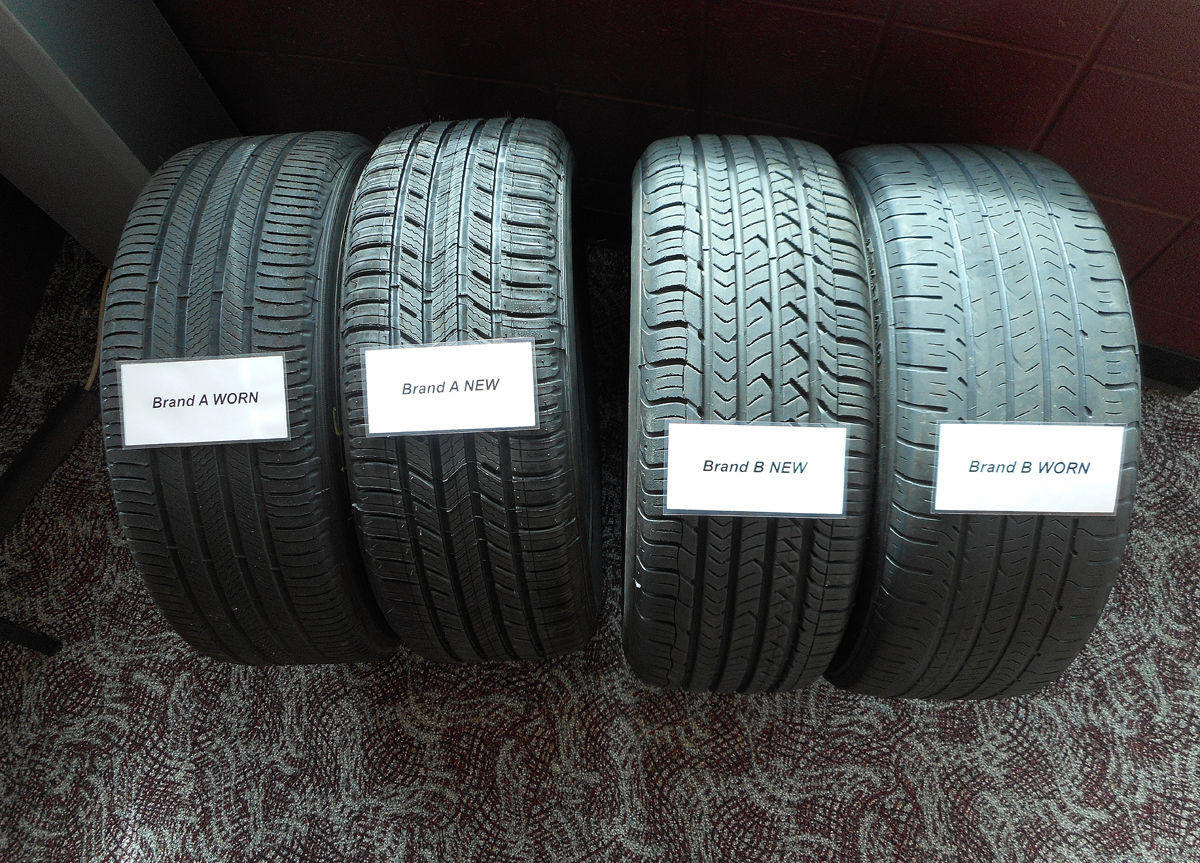The Truth About Worn Tires

Brand comparisons between tires are probably nearly as old as the tire business itself. However, as Michelin pointed out during a program last month, how often do you see a head-to-head between two sets of well-used rubber?
The answer is probably not very. Which is why last month the French manufacturer held a hands-on demonstration, titled The Truth About Worn Tires, at the Laurens Proving Grounds facility near its North American headquarters in South Carolina.

Bucking the trend
“This is not a normal event that Michelin puts on. Normally, we invite you out for a new product launch or a corporate announcement, but that’s not what this is about. We are just a voice in the industry here talking about something we’re very passionate about. And that’s safety,” said brand director Andy Koury.
“Typically when the industry is testing tires it’s standard to test what? New tires. Rarely do we test anything that’s worn, so it’s something we’re going to highlight at this event. It’s truly important as most consumers, after they buy the tire and leave the shop, they’re already driving on worn tires.”

The demo consisted of two activities. The first: doing three laps around a deliberately wet section of the test track in crossovers all spec’d the same, but on four sets of tires — “Tire A” and Tire B (all branding was removed prior) in both new and worn condition, the latter simulated by artificially shaving the tread to 3/32nds.
Although we weren’t privy to the specific models yet, it was pretty clear from the get go A was the more capable of the two, being able to better hold a consistent line around the turns at speed than B. In both cases, unsurprisingly, the new versions performed best.

Wet braking
The next exercise proved to be most illuminating. This time we got behind the wheel of Toyota Camrys equipped with a similar setup and GPS tracking, except instead of lapping, we were to accelerate to 72 km/h an hour in a straight line, activate cruise control and then once entering a designated stop box — sprinkled in water of course as that is truly the best way to identify any hidden issues — slam on the brakes as hard as possible in order to measure stopping distance. Tire A worn took 8.5 metres further to come to a complete halt than when new, Tire B, 18.1 metres.
As Michelin explained, some tires are designed to wear better, keeping a proper contact patch (the section of rubber actually contacting the road surface) as well as the grooves and biting edges that help maintain traction in slick conditions. This helps drivers to squeeze out more usable life from a set. As it turns out, Tire A was a Michelin passenger tire, and B a Goodyear equivalent.

Replacement
When it does come time to replace your tires, did you know dealerships offer competitive pricing and a broad selection? We asked Cameron Ma, service director at OpenRoad Lexus Port Moody, why customers should consider going this route.
What do you say to those who avoid going to the dealer for parts, such as tires, for fear of inflated pricing?
CM: This is a common misconception — in recent years, manufacturers have begun implementing “price matching” programs for tires, as they know consumers’ time is limited and if the dealership can provide value, people will do business there rather than driving all over town to save a few dollars. We are also seeing this on other repair parts: brakes, air filters, belts, hoses etc.
What brands does OpenRoad carry?
CM: OpenRoad stores have access to multiple tire warehouses and distributors, so we are able to supply most major brands. There are some offshore or in-house makes that we may not be able to source, but for the various sizes and tire categories, we would be able to find a comparable example and even offer multiple options based on price and/or performance.
Any other advice?
CM: Your dealer knows your vehicle best. OpenRoad technicians have been trained specifically on your make and model and it’s systems, and work on those vehicles on a daily basis. When considering something as important as tires you want to ensure it’s done correctly. With new technology like TPMS (tire pressure monitoring) sensors, correct scanning tool are required to program, read and diagnose data from each sensor. Some independent repair facilities or tire stores may not have the capability to program and interface with the technology correctly.
Contact OpenRoad’s service and parts department to learn more.

